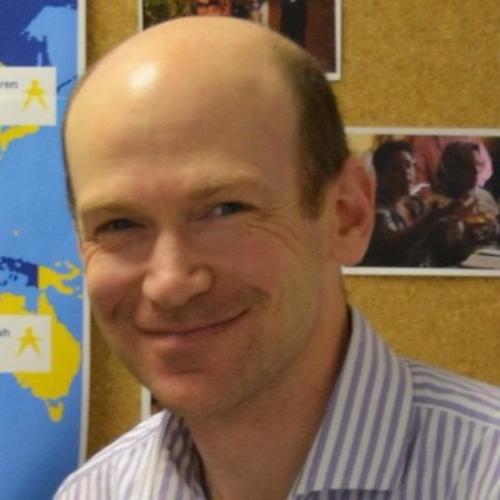Hugh Salmon est le Directeur de l’Alliance mondiale pour les travailleurs des services sociaux. Il dirige un éventail d’initiatives mises en œuvre par l’Alliance au niveau mondial, régional et national, axées sur l’évaluation et le renforcement des travailleurs des services sociaux, plaidant en faveur d’un investissement plus soutenu dans cette catégorie de professionnels, et explorant le rôle de cette dernière dans divers contextes, notamment dans la protection sociale (en combinant les transferts monétaires avec des services de soutien) dans les secteurs de la santé, de la justice et de l’éducation, ainsi que dans des situations humanitaires. Hugh a acquis sa première expérience en travail social en tant que volontaire en Jordanie et au Royaume-Uni à la fin des années 1980 et au début des années 1990. Il a obtenu sa qualification en tant que travailleur social à Londres en 1995, puis, après cinq ans d’expérience en tant que travailleur social au Royaume-Uni, il a commencé à travailler à l’international en tant que formateur et conseiller en travail social, principalement dans le domaine de la protection de l’enfance et de la réforme des systèmes de prise en charge alternative, d’abord en Europe de l’Est, puis en Asie, en Afrique, en Amérique latine et au Moyen-Orient. Il compte désormais plus de 20 ans d’expérience internationale dans le soutien et la conduite des efforts visant à renforcer les travailleurs des services sociaux, ainsi que les réseaux de volontaires, de praticiens et d’organisations de la société civile. Il réside à Londres, au Royaume-Uni, avec sa famille.
L’Alliance mondiale des travailleurs des services sociaux compte plus de 3 000 membres dans le monde entier. Il s’agit d’un réseau à but non lucratif, soutenu par le Tides Center basé aux États-Unis, et ses projets actuels sont financés par USAID, l’UNICEF, la Fondation Martin James et des dons privés.
Vous pouvez en savoir plus sur leur site web : https://www.socialserviceworkforce.org/
Résumé de l’intervention
Titre de l’intervention
Le rôle des Services sociaux dans les écoles dans la prévention et la protection des enfants et le support aux familles
The Global Social Service Workforce Alliance and UNICEF have launched a technical note which summarises how violence against children and other child protection concerns can be addressed more effectively when social service workers are integrated into school structures. Since children spend a significant amount of time each day in school, school-based staff play a vital frontline role in identification and response. When appropriately capacitated, resourced and supported, social service workers located in or working with schools can play a major role in addressing concerns related to violence, abuse and neglect, mental health, and psychosocial well-being. This paper includes a review of evidence across the globe, and finds that teachers and school administrators usually have primary responsibility for reporting child protection concerns, but in many countries, they have neither the training and support, nor the time, to recognize signs and symptoms of abuse or violence, to record concerns, or to make referrals. A review of studies also finds that teachers in different contexts tend to under-report child abuse due to lack of knowledge about the signs and symptoms of abuse, unclear reporting procedures and fear of making inaccurate reports. While it is recommended that teacher and administrator training and support remain a central component of child protection within schools, child protection and well-being concerns can be addressed more effectively if the responsibility is shared with social workers, or others in the social service workforce. Properly trained and supported social service workers can work with teachers and administrators to establish an overall protective climate and culture in schools that is safe, non-violent and inclusive. They can provide intensive and specialized support for at-risk affected students. They can also connect interventions at school with the wider child protection system and effectively follow-up on child protection concerns when making external referrals and collaborating with other agencies and community actors.

